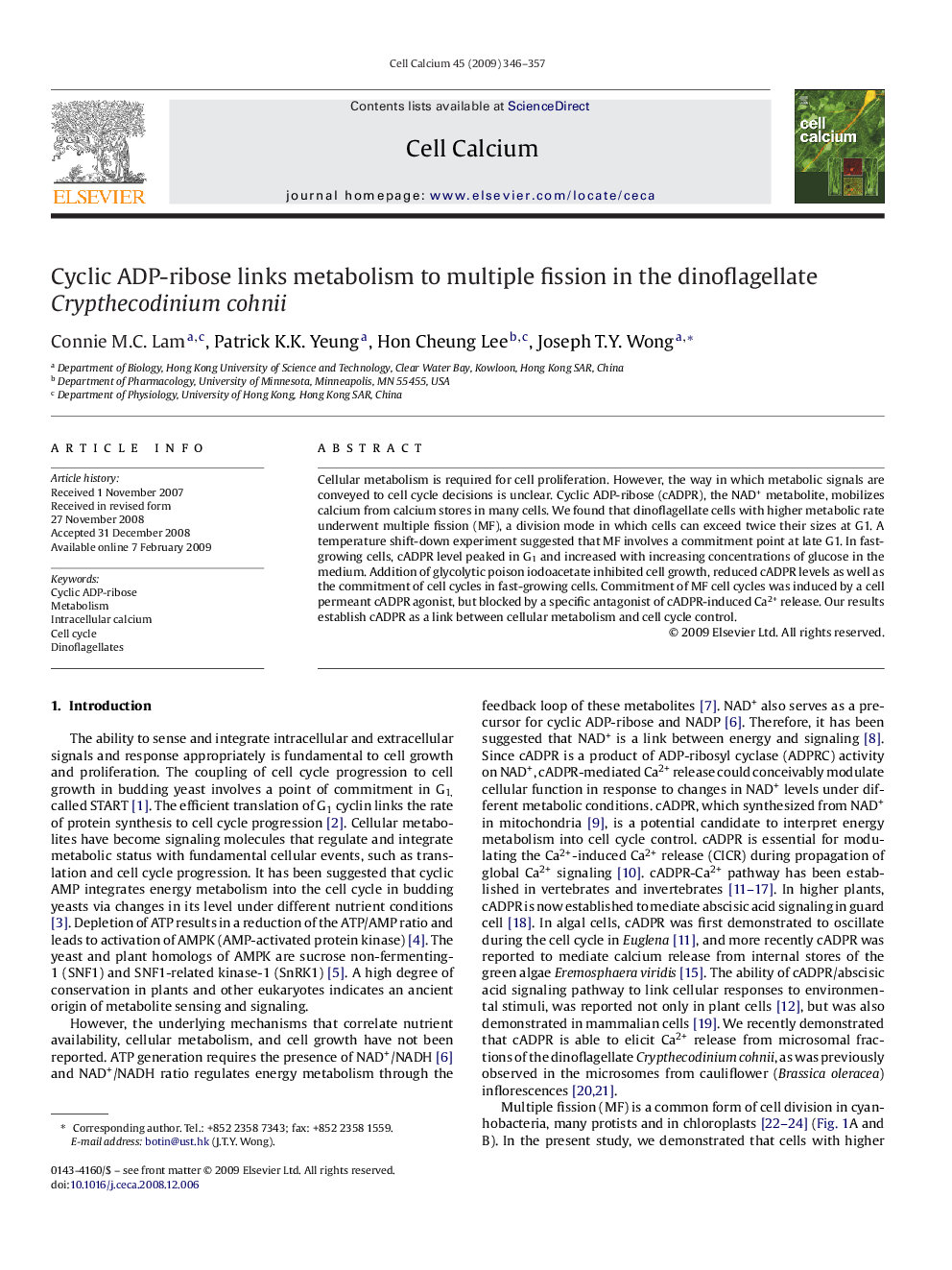| Article ID | Journal | Published Year | Pages | File Type |
|---|---|---|---|---|
| 2166551 | Cell Calcium | 2009 | 12 Pages |
Cellular metabolism is required for cell proliferation. However, the way in which metabolic signals are conveyed to cell cycle decisions is unclear. Cyclic ADP-ribose (cADPR), the NAD+ metabolite, mobilizes calcium from calcium stores in many cells. We found that dinoflagellate cells with higher metabolic rate underwent multiple fission (MF), a division mode in which cells can exceed twice their sizes at G1. A temperature shift-down experiment suggested that MF involves a commitment point at late G1. In fast-growing cells, cADPR level peaked in G1 and increased with increasing concentrations of glucose in the medium. Addition of glycolytic poison iodoacetate inhibited cell growth, reduced cADPR levels as well as the commitment of cell cycles in fast-growing cells. Commitment of MF cell cycles was induced by a cell permeant cADPR agonist, but blocked by a specific antagonist of cADPR-induced Ca2+ release. Our results establish cADPR as a link between cellular metabolism and cell cycle control.
